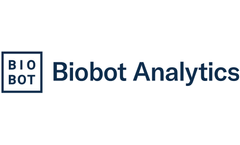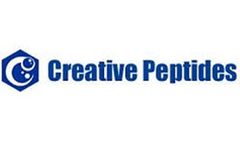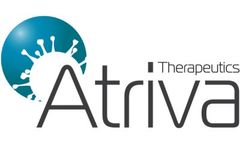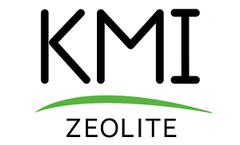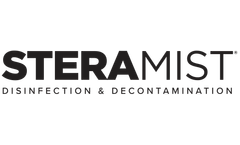Sars Cov 2 Insight Research Assay For Sars Cov 2 Articles & Analysis
85 articles found
In recent years, messenger RNA (mRNA) technology has emerged as a revolutionary approach in the field of medicine, particularly in vaccine development and gene therapy. The ability to deliver mRNA effectively to target cells is crucial for harnessing its potential in treating a variety of diseases, including infectious diseases, cancer, and genetic disorders. This article explores the latest ...
Precision-Cut Lung Slices (PCLS) have emerged as a innovative ex vivo model that allows researchers to explore deep into lung physiology, disease mechanisms, and pharmacological responses. By offering a unique combination of biological complexity and controlled experimental conditions, PCLS serve as a critical bridge between the limitations of traditional in vitro cell cultures and the ...
Welcome to 2023-2024 season’s respiratory surveillance recap, where we’ll share insights from the most recent respiratory surveillance season, covering three major respiratory viruses: COVID-19, influenza, and RSV. Tracking these illnesses is imperative for maintaining population health because these illnesses significantly impact individual wellbeing and healthcare costs, resource ...
Goal Understanding of Coronavirus (SARS-CoV-2) of interest using whole-genome sequence data from NCBI Solution Loci helps the scientists to understand the Coronavirus at the molecular level with a few click ...
Vaccines are considered one of the most successful medical interventions in the past few centuries, aiming to harness the human immune system and generate lasting protection against specific diseases. Traditional vaccines rely on the use of inactivated pathogens to trigger an immune response. However, many of these formulations carry a high risk of causing allergies or autoimmune reactions. ...
The field of medical science has long utilized disease models, which are systems simulating the progression and expression of a disease, to better understand various illnesses. These models facilitate the study of disease pathology, identifying underlying mechanisms, and developing potential treatments. In the context of respiratory diseases, numerous models have been developed, with a prominent ...
The recent COVID-19 pandemic again highlighted the urgent need for broad-spectrum antivirals, both for therapeutic use in acute viral infection and for pandemic preparedness in general. The targeting of host cell factors hijacked by viruses during their replication cycle presents one possible strategy for development of broad-spectrum antivirals. By inhibiting the Raf/MEK/ERK signaling pathway, ...
Nano-flow cytometry is a revolutionary technology that has the potential to transform early disease detection and diagnosis. Nano-flow cytometers are able to detect and analyze individual nanoparticles, including extracellular vesicles and viruses, with high sensitivity and accuracy. This makes them ideal for detecting diseases at their earliest stages, when they are most treatable. How does ...
Introduction to Quantitative Polymerase Chain Reaction A highly delicate technique for the amplification and identification of deoxyribonucleic acid is polymerase chain reaction (PCR). In molecular biology, its conceptual simplification has made it the most utilized method and can, in theory, identify as little as a single segment of DNA. Therefore, for a huge variety of bacterial, fungal, viral, ...
SARS-CoV-2 is a newly discovered human coronavirus group (HCoV), which are single-stranded RNA viruses belonging to the family of Coronaviridae. A range of respiratory diseases have been induced by some of these pathogens in the past. SARS-CoV-1 infected more than 8,000 individuals around the world, for example. Human coronavirus linked to Middle East respiratory syndrome (MERS-CoV) also occurred ...
The field of medical science has long utilized disease models, which are systems simulating the progression and expression of a disease, to better understand various illnesses. These models facilitate the study of disease pathology, identifying underlying mechanisms, and developing potential treatments. In the context of respiratory diseases, numerous models have been developed, with a prominent ...
The FDA's Center for Drug Evaluation and Research (CDER) regulatory approval of a total of 26 NME (New Molecular Entity) drugs in the first half of 2023. It is worth noting that the 26 drugs approved include 4 peptide drugs, accounting for 15% of the total. In the past 2022, the FDA has approved only three peptide drugs: Tirzepatide, Lutetium 177Lu Vipivotide Tetraxetan and Terlipressin, of which ...
Natural zeolites are known to bind various bacteria and viruses. Researchers hypothesised that clinoptilolite can also bind members of the Coronaviridae family. Results showed that the addition of 0.01% PCT purified clinoptilolite to a HCoV-229E suspension containing 16,000 PFU per ml resulted in an 87% reduction of the virus concentration. Results suggest that purified clinoptilolite in a ...
The clinical presentation of COVID-19-related illness ranges from asymptomatic to mild respiratory symptoms resembling influenza infection to acute symptoms including pneumonia requiring hospitalization and admission to the intensive care unit. COVID-19 starts in the upper airways and lungs, but in severe cases can also affect the heart, blood vessels, brain, liver, kidneys, and intestines. ...
The coronavirus pandemic that could have been prevented After creating widespread global devastation and panic, the origin of the coronavirus pandemic has largely remained a mystery. Now, new information has emerged that reinforces a claim that it somehow began spreading in Wuhan, China. Citing a classified intelligence report provided to the White ...
One of the main benefits of using Nuvonis’ fully tested GMP Vero cells is the unparalleled speed towards clinical trials. A case example from one of our customers, hVIVO: First contact with Nuvonis in July 2020, due diligence, contracting, provision of GMP Vero cells and protocols, as well as full documentation Production of GMP material in November 2020 ...
ByNuvonis
Newcastle disease is a highly infectious viral disease of the avian species. The causative agent is Newcastle disease virus (NDV), which belongs to the family of Paramyxoviridae. Many commercial vaccines, both live and inactivated, are available on the market and protect from NDV infection and disease. In addition, viral vectors based on Newcastle disease virus have been previously ...
ByNuvonis
At the end of the year 2019, a cluster of severe pneumonia of unknown cause was described in Wuhan (Eastern China) and a SARS-like acute respiratory distress syndrome (ARDS) was noted in these patients. Early in January 2020, sequencing revealed a novel coronavirus (now termed SARS-CoV-2) as the causal factor for the disease designated as COVID-19. The pandemic caused by the virus has unforeseen ...
ByNuvonis
Vero cellsare a continuous adherent cell line that is frequently used in cell culture and plays an important role in worldwide vaccine and vector production (manufacturing). Unlike other mammalian cells, they do not secrete interferon alpha or beta when infected by viruses – this is one of the reasons that efficient replication of many viruses can be achieved in Vero cells, ...
ByNuvonis
Summary The severe acute respiratory syndrome coronavirus 2 (SARS-CoV-2) pandemic began in 2019 and rapidly scaled to a global presence of disease known as COVID-19. Despite the relatively fast implementation of testing and vaccination worldwide, the rise of emerging viral variants and breakthrough infections raises concerns that SARS-CoV-2 will continue to pose a global health threat. ...



